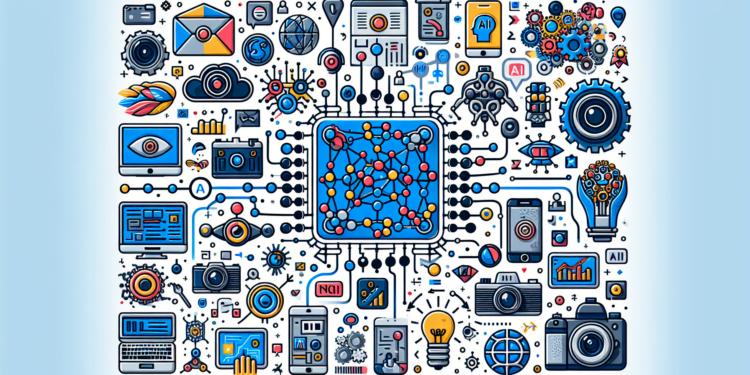WordNet, a reference lexical database in computational linguistics, has cemented its position as an invaluable tool in artificial intelligence (AI). Created at Princeton University, this conceptually organized resource of interrelated words provides a framework for a wide variety of applications in natural language processing (NLP) and is a critical link in understanding meanings and synonyms in human languages.
Theoretical Contextualization and WordNet Phylogeny
Initially, it was conceived as a network connecting nouns, verbs, adjectives, and adverbs in sets of synonyms (synsets), linked by semantic and lexical relationships. Its structure, based on psycholinguistic and lexicographic theories, aims to reflect how vocabulary is organized in the human mind.
Algorithmic Advances:
With the evolution of WordNet, word sense disambiguation (WSD) algorithms have seen notable improvements, exploiting the richness of the database to differentiate between multiple meanings. Algorithms like Lesk, based on context overlap, and more recently, supervised and semi-supervised approaches employing deep learning, have expanded the capabilities of WSD, crucial for tasks such as machine translation and sentiment analysis.
Integration with Machine Learning:
The incorporation of WordNet into machine learning-based systems reflects a growing interest in enriching language models with high-quality lexical encyclopedias. Word embeddings, such as Word2Vec or GloVe, when integrated with WordNet, have shown significant improvements in capturing semantic relationships and in performing tasks like text classification and recommendation systems.
Emerging Applications:
WordNet’s applications in virtual assistants and chatbots reveal its potential to enhance the understanding of queries and generate more accurate responses. Additionally, in the field of emotional artificial intelligence, it is exploited to identify the emotional load associated with certain words and improve human-machine interaction.
Comparative Analysis and Review of Previous Work:
Compared to its predecessors, such as traditional thesauri, WordNet provides a level of granularity and connectivity that is superior. However, it is crucial to contrast this resource with more recent approaches like BERT or OpenAI’s GPT, whose attention models and dynamic contexts offer a more complete understanding of language, albeit often at the cost of higher computational requirements.
Projection of Innovations:
Looking to the future, the integration of WordNet with emerging technologies such as transformer neural networks and explainable AI promises advancements in the interpretability of AI models and an improved ability to handle figurative language and polysemy. Moreover, its adaptation to less represented languages opens up possibilities for modeling global linguistic diversity.
Case Study:
A revealing case study is the use of WordNet in academic article recommendation systems: by expanding user queries with synonyms and related terms, there has been an increase in the relevance and coverage of the suggested documents, highlighting the importance of a semantic approach in information retrieval.
In conclusion, WordNet persists as an indispensable resource in AI, facilitating the convergence of linguistics and technology. Its evolution and application at the forefront of NLP and machine learning preserve its status not only as a linguistic resource but as a key component in the interpretation and generation of language in artificial intelligence settings, continually challenging the boundaries of what machines can understand of the complex fabric that is human language.






















